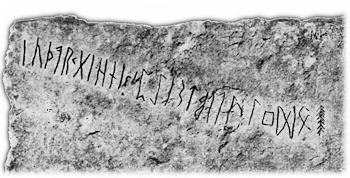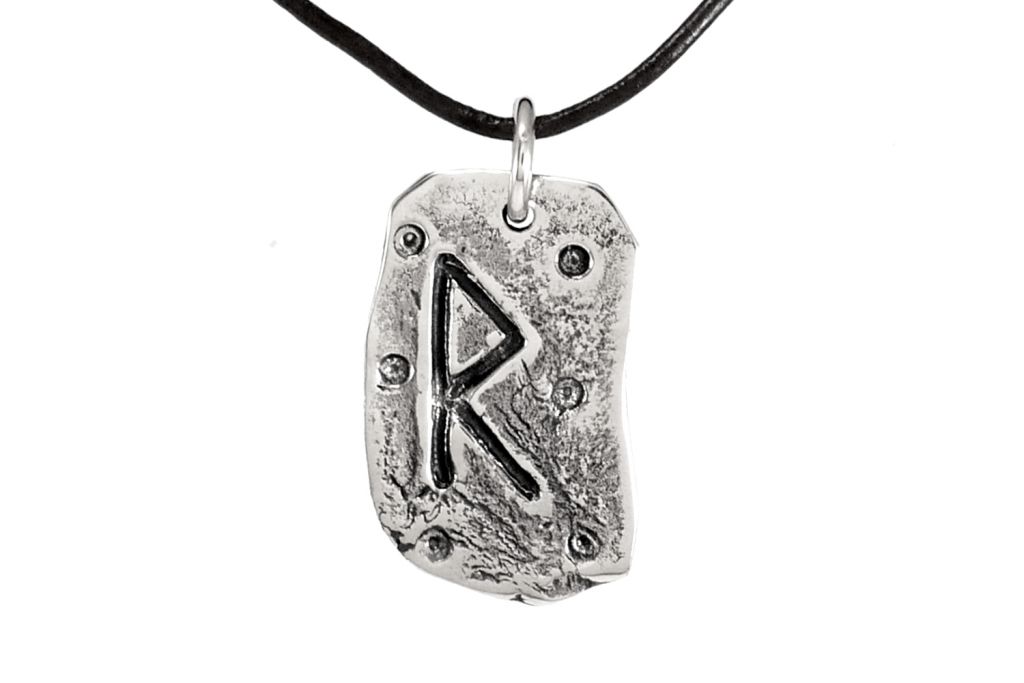Rune Raido, Silver - Rune Amulet Pendant of a safe journey or ride
The rune Raido is the equivalent of the letter "R", the translated meaning is "journey" or "ride". The rune of a good journey is assigned to the god Thor, the heal power strenghtens the legs.
Handmade from real bronze, delivery with leather thong and certificate. 28x18mm.
Rune Raido (the journey, ride)
The rune Raido is the equivalent of the letter "R", the translated meaning is "journey" or "ride". The rune of a good and safe journey is assigned to the god Thor, the heal power strenghtens the legs.
Handmade from solid 925 silver in a rough authentic look. The delivery comprises a gift box, a leather necklace and a certificate. Size 28x18mm.
Runes in the Germanic world
"That is tried and tested when you ask about runes, descended from the gods who made the most powerful gods and which the giant poet painted!"
Havamal, Edda song
According to legend, the runes were created by Odin, who was wounded by his own spear and hung on the world tree Yggdrasil for 9 days and nights. The divine origin and the possibility of fixing the spoken word for eternity explain the special magical meaning of the runes themselves. For a normal person who could neither read nor write, this must have been a miracle. The characters of the elder Futhark were used for magical purposes, as preserved spells and curses show. The Roman writer Tacitus describes how the Teutons looked for answers to their questions with the help of signs:
"Nobody pays as much attention to the omens and the oracle as they do. They cut off a branch from a fruit-bearing tree and cut it into small pieces. These mark them with symbols and scatter them haphazardly and as luck would have it on a white sheet. Then in a public questioning the tribal priest prays, in a private questioning the head of the house prays to the gods, looking up at the sky, lifts up three branches one after the other and points them out according to the incised symbols."
The 24 runes of the older Futhark are still the basis for original runic magic, which is practiced seriously not only in the Asatru cult.

Runestone from Kylver in Stånga, Gotland, around 400-450 AD with inscription in the elder Futhark:
(ᚠ) Λ ᚦ ᚨ ᚱ ᚲ ᚷ ᚹ ᚺ ᚾ ᛁ ᛃ ᛈ ᛇ ᛉ ᛊ ᛏ ᛒ ᛖ ᛖ ᛗ ᛚ ᛜ ᛞ ᛟ
The Kylver stone shows all letters of the older Futhark. The runes Eihwaz and Pertho are interchanged in comparison to other rune series, Ansuz and Berkana are mirror-inverted as "turning runes". Fehu, Jera and Wunjo are partly not preserved and are difficult to recognize. The rune stone was probably a cover for a stone box grave and was probably ment as an additional magical consecration of the grave site.
"The main inscription, the Futhark, is supposed to mobilize all rune forces as a whole in order to secure the peace of the grave, be it against a troublemaker from outside, be it against any revenant." (Wolfgang Krause, see RGA 17, p. 523)
| Delivery time | 1-2 weeks |
|---|---|
| weight | 0.010000 |
| size | 28 x 18 mm |
| Era | Germans |
| Material | Silver 925 |
| Kind of replica | Runes |
| scope of delivery | Delivery in a jewellery case with leather necklace and certificate |

